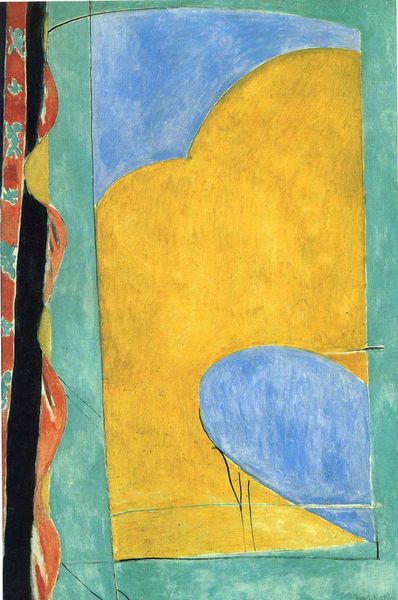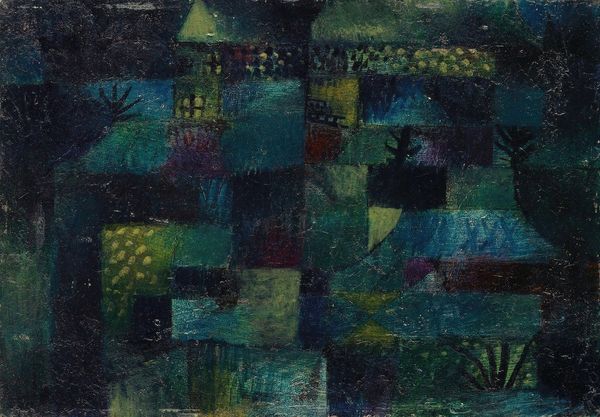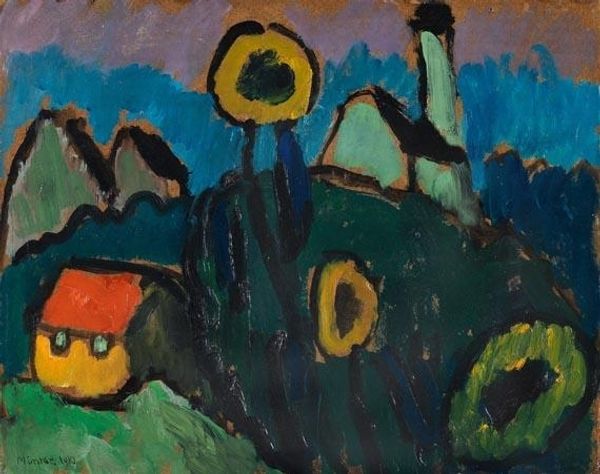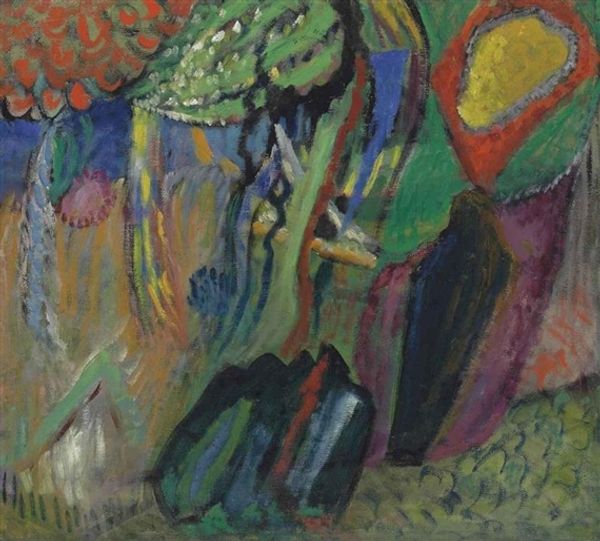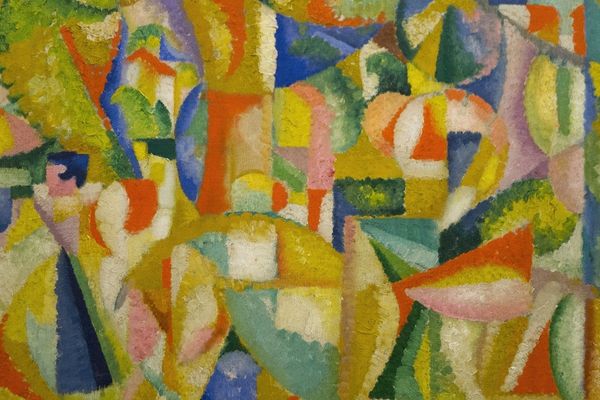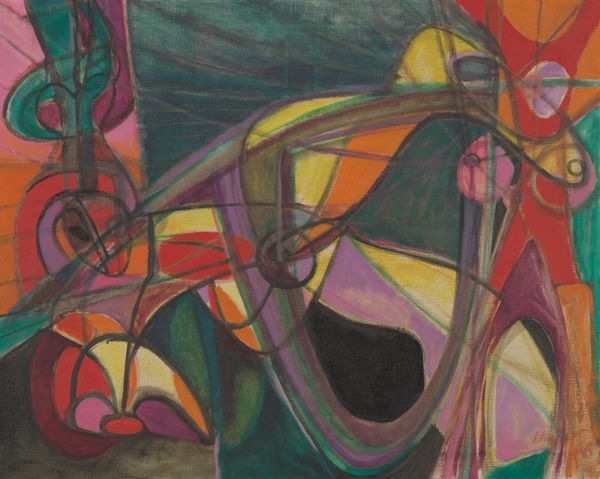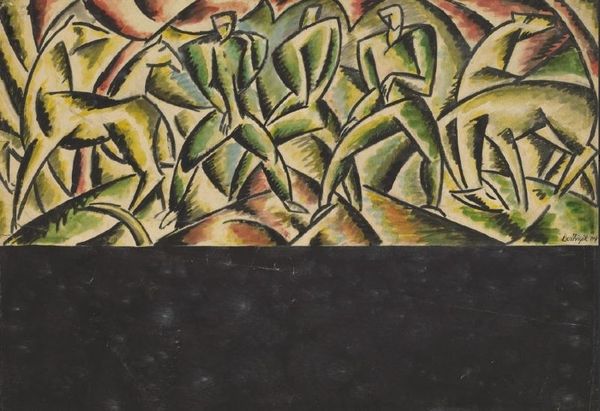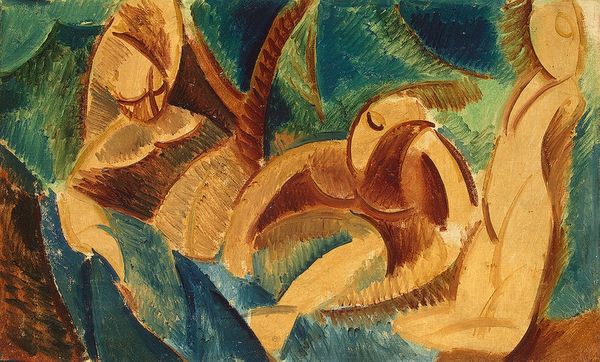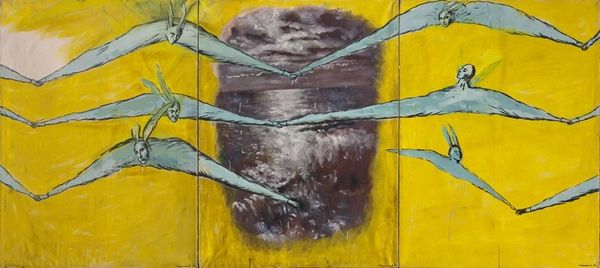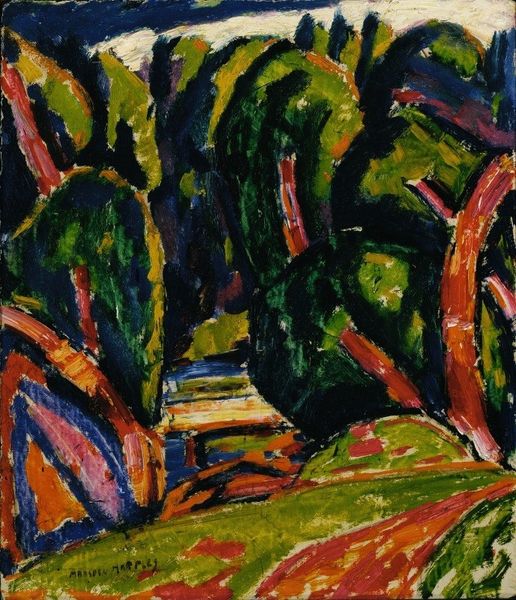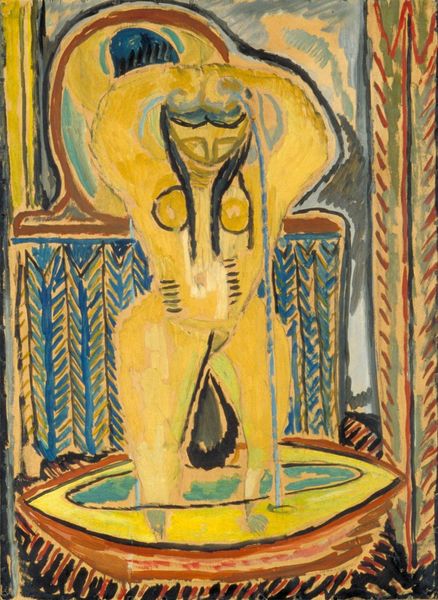
painting, pastel
art-nouveau
abstract painting
painting
landscape
abstract
expressionism
pastel
modernism
watercolor
Copyright: Public Domain: Artvee
Curator: The overall feeling, even at a glance, is almost reverential, don’t you think? A little solemn, but certainly quite pleasing. Editor: Indeed. Let me orient our listeners. What we have before us is “White Blossom in the Garden,” an example of Paul Klee's distinctive, abstract style, created around 1920. It combines pastel and watercolor to generate a textured, somewhat dreamlike depiction of a landscape. Curator: That’s true. The planes of greens, yellows, and blues definitely create a sensation of receding space, yet the flower itself is almost aggressively flattened. What does Klee gain by suppressing a conventional perspective? Editor: Perhaps the artist seeks to synthesize the material garden with its essence. In the wake of the first World War, nature offered solace. But in German Expressionism, you’d often find anxiety or social commentary mixed with visual delights. I imagine the carefully delineated boundaries within the composition might symbolize societal structures—ordered, yet confining. Curator: Yes, there's an imposed geometry. The curvilinear shapes struggle within those strictures. Note how Klee's restricted palette adds to this sense of tension, each hue carefully positioned to amplify contrast and achieve maximum visual interest, despite the obvious repression. Editor: It is an era marked by constraint, with governments cracking down and the spectre of hyperinflation looming large. Klee was part of the Bauhaus movement—an incredibly vital period for questioning form and function in the hopes of building a better world, so to consider societal reform when viewing his painting doesn’t feel like much of a stretch. Curator: True, and within this small watercolor, Klee wrestles with tensions through his art. His personal vocabulary feels potent yet strangely intimate. The delicate flower asserts itself but stays carefully within bounds. Editor: An ordered hope for a better future, viewed from within the confines of a broken system? Curator: Perhaps. Though, ultimately, as viewers, it’s the pure act of beholding the composition's internal harmonies and frictions that I find to be Klee's enduring achievement. Editor: I see how the composition prompts that formal appreciation—for me, this small painting speaks volumes about the artist's commitment to weaving the personal with public struggles.
Comments
No comments
Be the first to comment and join the conversation on the ultimate creative platform.
